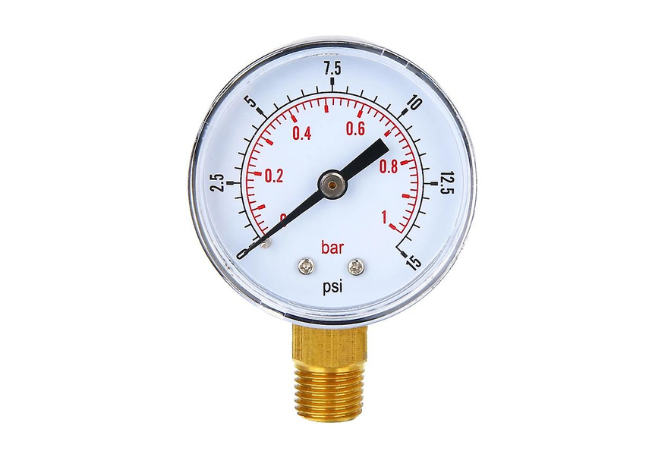What Makes Infrared Thermometers a Smart Choice for Modern Applications?
Introduction: The Rise of Infrared Thermometers
Infrared thermometers have emerged as one of the most trusted and efficient tools for measuring temperature in today’s fast-paced, hygiene-conscious world. Whether used for clinical screenings, industrial inspections, or food safety compliance, these devices deliver quick and accurate results without physical contact. By detecting infrared energy emitted by an object’s surface, they convert it into a readable temperature value, making them ideal for situations where safety, speed, and convenience are crucial.
From homes to high-tech labs, infrared thermometers are now a vital part of everyday monitoring and diagnostics.
What Is the Principle Behind Infrared Thermometers?
Infrared thermometers operate on the principle that all objects emit infrared radiation in proportion to their temperature. The hotter an object is, the more radiation it emits. The device uses a lens to focus this radiation onto a detector, which converts the energy into an electrical signal. That signal is then processed and displayed as a temperature reading.
- Works by sensing infrared radiation emitted from a surface
- Does not require physical contact
- Provides real-time readings
- Ensures safe usage in hazardous or sterile environments
This technology is especially beneficial for measuring hard-to-reach, moving, or hazardous objects where traditional thermometers might fail.
What Categories of Infrared Thermometers Are Available?
Infrared thermometers come in various forms to cater to different needs. Each type is optimised for a specific use case:
- Handheld IR Thermometers – Ideal for quick inspections in automotive, food, and HVAC sectors.
- Forehead IR Thermometers – Used widely in healthcare for non-contact temperature checks.
- Infrared Sensors for Automation – Mounted in production lines to monitor machines or product temperatures.
- Thermal Imaging Devices – Capture heat maps for a complete visual analysis of temperature distribution.
The correct model depends on your application, required accuracy, and environmental conditions.
What Are the Benefits of Using Infrared Thermometers?
Infrared thermometers offer numerous advantages over conventional options. Their innovative design supports user efficiency and operational safety:
- No Contamination Risk – Ideal for cleanrooms, healthcare, and food prep areas.
- Speed and Precision – Instant results support faster decision-making.
- Safe Operation – Maintains a safe distance from hot surfaces, chemicals, or infectious agents.
- Flexible Applications – Suitable for indoor, outdoor, industrial, and domestic use.
- Low Maintenance – Durable designs with minimal upkeep requirements.
These benefits make infrared thermometers a preferred choice for both casual and professional users.
Which Features Define a High-Quality Infrared Thermometer?
Before purchasing an infrared thermometer, it is essential to understand its key features. These factors affect accuracy, usability, and suitability for various environments:
- Distance-to-Spot Ratio (D: S) – Indicates how far the device can measure accurately from the target.
- Emissivity Adjustments – Important for measuring different material surfaces accurately.
- Laser Guidance – Helps pinpoint the exact area being measured.
- Backlit Digital Display – Allows visibility in low-light conditions.
- High/Low Temperature Alerts – Notifies users when readings exceed set thresholds.
- Storage and Recall – Keeps a record of previous readings for comparison.
Selecting a thermometer with the right mix of these features ensures greater reliability and versatility.
How Are Infrared Thermometers Used Across Industries?
Infrared thermometers have proven indispensable across numerous sectors. Here’s how different industries are leveraging this technology:
- Healthcare and Emergency Services
- Perform quick and contactless temperature screenings
- Monitor patient temperatures without disturbing them
Food Industry and Hospitality
- Measure the temperature of hot trays, ovens, and storage units
- Comply with food safety regulations
Manufacturing and Engineering
- Prevent equipment failure by monitoring machine heat levels
- Detect electrical overloads and faults
HVAC and Building Maintenance
- Detect inefficiencies in heating and cooling systems
- Check airflow, insulation, and furnace outputs
Automotive and Mechanical Repairs
- Test engine, brake, and radiator temperatures
- Identify overheating or underperformance
Best Practices for Using Infrared Thermometers
Even the most advanced IR thermometer requires proper handling to ensure accuracy. Follow these tips for effective use:
- Target the Right Spot – Avoid measuring reflective or shiny surfaces unless emissivity is adjusted correctly.
- Stay Within Range – Know your device’s D:S ratio for accurate results.
- Avoid Steam or Smoke – These can distort infrared readings.
- Let the Device Acclimate – Allow time for adjustment when moving between drastically different environments.
- Clean the Lens – Dirt and debris can interfere with the sensor’s ability to detect infrared radiation.
These best practices ensure consistent results across different scenarios and environments.
What Does the Future Hold for Infrared Thermometry?
Infrared thermometers are continuously evolving, incorporating the latest innovations in electronics, connectivity, and AI-driven analysis. Future developments include:
- Bluetooth and Cloud Sync – Enable real-time monitoring and digital record-keeping.
- Voice Command Features – Hands-free control for busy environments.
- Smart Alerts – Instant notifications for abnormal readings or equipment failures.
- AI-Based Pattern Recognition – Automated data analysis for predictive maintenance or health diagnostics.
- Integration with IoT Systems – Seamless monitoring across smart homes, industrial automation, and healthcare networks.
As infrared technology advances, these devices are expected to become smarter, more compact, and more integrated with other digital systems.
Conclusion
Infrared thermometers are more than just convenience tools—they are critical instruments that support safety, compliance, and efficiency across a wide range of fields. Their ability to deliver contactless, accurate temperature readings makes them ideal for fast-paced, sensitive, or hazardous environments. As demand continues to rise and innovations push the boundaries of what's possible, infrared thermometers will remain essential in healthcare, industrial operations, food safety, and beyond.
With proper usage and the right features, an infrared thermometer is a wise, future-ready investment for accurate and effortless temperature monitoring.




Comments
Post a Comment